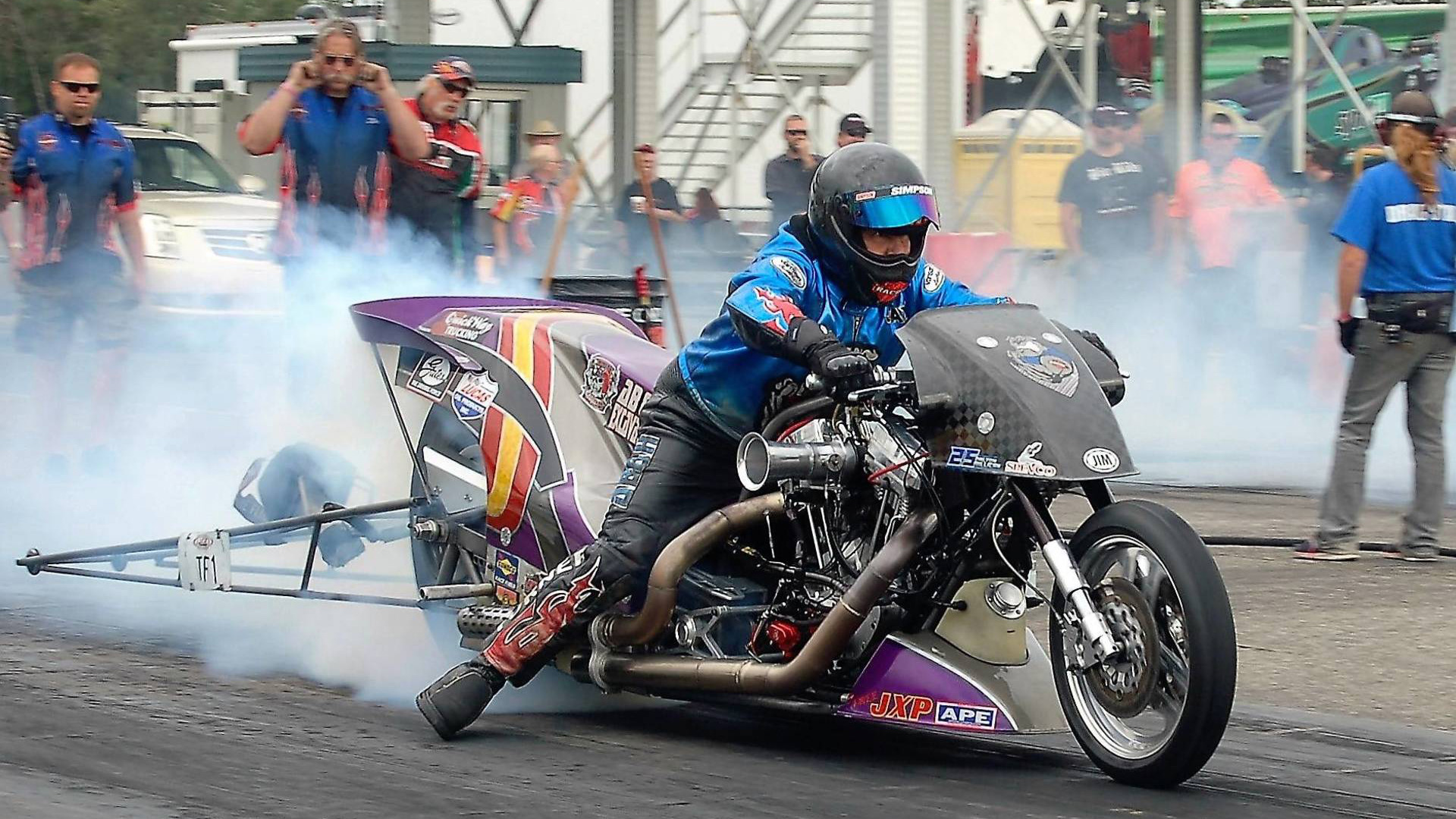

In 2010, Rickey House was racing his Nitro Harley on a drag strip in Arizona when his motorcycle flipped at 200 mph, and House flew off and tumbled down the track.
He spent the night in the hospital, then came back the next day and ran two more rounds on a damaged bike.
And there was that time in Ohio: After he did his burnout, the engine dropped a cylinder and blew the head off. On Nitro Harleys, you pretty much lie down on the motorcycle. House ended up knocked out, with a concussion. “That,” he said, “was a sonic boom, right there.”
For the last decade, House has competed in the International Hot Rod Association’s Nitro Bike class. These are the biggest, baddest, loudest, heaviest, almost cartoonish drag bikes there are.
Slower classes “don’t give me the adrenaline rush the Nitro bikes do,” said the 57-year-old Texan. “It’s kind of hard to back up, you know?” One competitor said it would probably be kind of like spending years on heroin, then switching to Advil. Just not the same.
At one track, the local Hells Angels chapter came out in support of a member racer. At another, it was the Bandidos. (Club motto: “We are the people your parents warned you about.”)
Make no mistake: These are tough guys. And they are, in fact, all guys: Unlike the slower, lighter Pro Stock motorcycle class in the NHRA, which has multiple female racers, none rode in the Nitro Bike class in the IHRA this season.
Tough guys. North Carolina businessman Tii Tharpe fell off his Nitro Harley at the IHRA World Finals in Memphis, going 217 mph. Seven days later he got back on the bike at Rockingham, North Carolina. He qualified fourth.
The motorcycles in question weigh about 1,000 pounds. Engines are typically Harley-Davidson V-twins, supercharged and pumping out about 2,000 horsepower on nitromethane fuel. The rider sits in a little notch above the engine – no padding – stretches out on his stomach, essentially laying prone, chin a few inches from the top of the engine. Riders wear Kevlar vests under their fire suits in case the engine explodes. A long wheelie bar helps them launch, and a parachute helps them stop.
The official IHRA top speed record is 230.76 mph, though a month ago at Castrol Raceway at Edmonton, Alberta in Canada, Tracy Kile ran a jaw-dropping 246.98 mph. But for it to become an IHRA World Record, you have to make a second pass within one percent of the speed of the record run, and Kile couldn’t back it up.
The record elapsed time, from a standing start to the end of the quarter-mile, is 6.204 seconds, set earlier this year at Maryland International Raceway by Bob Malloy.
Last Friday, qualifying for the IHRA Northern Nationals at U.S. 131 Motorplex in Martin, Michigan, Malloy put on a riding demonstration. You steer not by turning the handlebars, but – as with any motorcycle – applying body weight from one side to another.
Malloy looked like he was wrestling an anaconda down the slippery track – leaning left, right, backward, forward – even leaning his head from side to side as he made minute corrections. “You have to,” he said. “The front wheel is off the ground for most of the run. You’re riding completely on the back tire.” And that tire is a massive Mickey Thompson racing slick so wide that the bike will pretty much stand up on its own when the rider isn’t on it.
So what’s the appeal? Malloy shrugs, shakes his head. “If you’ve ever done it,” he said, “you’d know.”
When it was all over at the Northern Nationals, Jay Turner, seen above, had won his second straight IHRA Nitro Motorcycle title. “A long weekend,” he said, “but a pretty good one.”